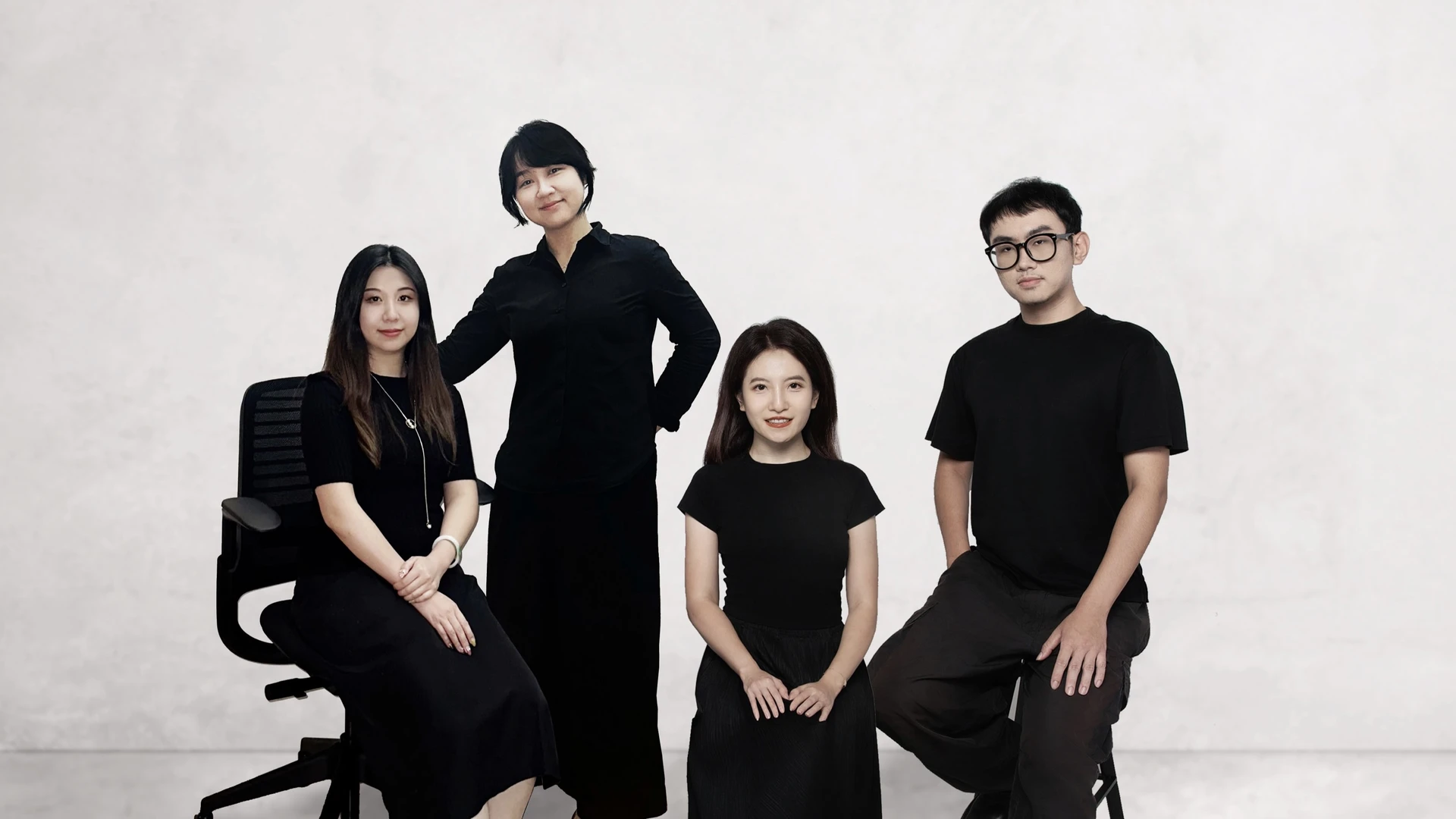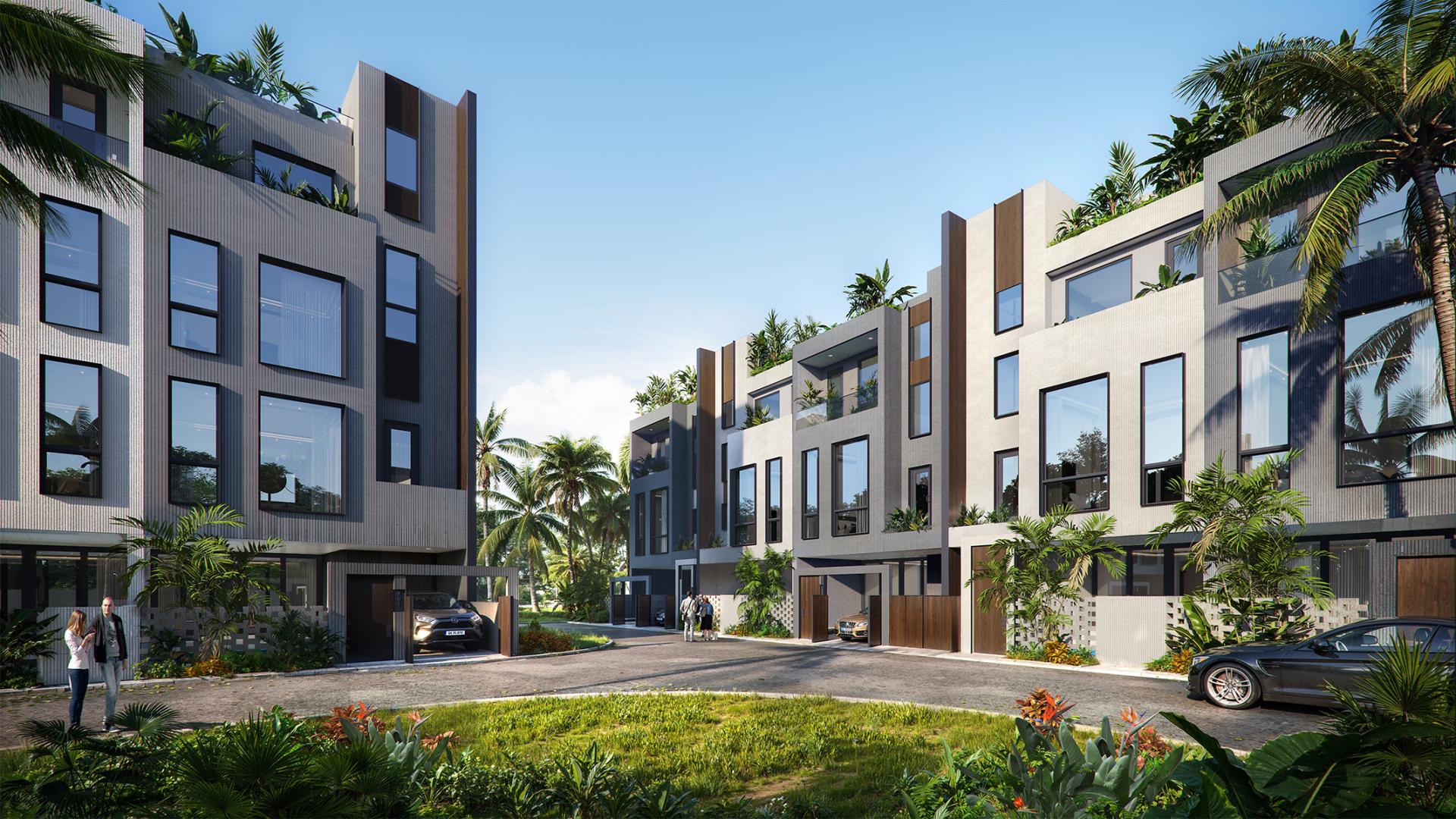Interview with HAVE Studio | A Cross-Continental Design Studio Inspiring Excellence
HAVE Studio
HAVE Studio, founded in 2019 by three principal designers from China, emerged from a shared passion for architecture and urban planning cultivated at USC and Columbia University. Initially focused on conceptual competitions, the studio has since evolved to specialize in residential projects, prefabricated vacation hotels, and installations, seamlessly bridging creativity and practical construction across its New York and Shanghai teams.
The concept of "HAVE" is derived from the initials of the founding members' names and conveys our passion for design: "Whenever and wherever we are, we have design, and we have architecture." No matter the time or place, we can still generate great ideas and innovative designs—that's the essence of what 'HAVE' means. HAVE Studio was founded by classmates through college and graduate school, sharing six years of study together.
This long journey built a strong understanding of each other's strengths and a shared passion for architecture. After graduation, each founder pursued a unique path in the industry: Hilary moved into large-scale urban design, Vivien specialized in residential spaces, April and Nan gained experience in full-process design and construction.
Beyond architecture, each founder developed interests in fields like new media, curating, multimedia production, and IP development. Eventually, we realized that combining our skills would allow us to enter competitions both in China and internationally. After winning several awards, we gained the confidence to officially launch HAVE Studio.
Our cross-disciplinary approach was well-received, attracting more talented individuals to join. Now, HAVE Studio is expanding beyond concept design and competition to focus on new construction and installation projects.
We believe that architecture and interior design provide a unique opportunity to blend creativity with practicality, enabling us to transform ideas into tangible experiences. Our passion for the field stems from a deep fascination with how spaces can shape experiences and influence emotions.
From a young age, we were captivated by the beauty and functionality of well-designed environments, leading us to pursue a career where we could create spaces that not only serve a purpose but also inspire and connect people. Ultimately, we are driven by the desire to positively impact lives through thoughtful design.
HAVE Studio was founded in New York by three principal designers from China, all with similar educational backgrounds in architecture and urban planning from USC and Columbia University. After several years in the architecture industry, we established HAVE Studio in 2019, initially focusing on architectural competition projects driven by a desire to realize our design ideals.
By 2021, the studio had already received numerous awards for architectural concepts and installation designs. As the studio evolved, the focus shifted toward practical construction projects, primarily concentrating on residential designs, small-scale prefabricated vacation hotels, and hotel developments. Today, HAVE Studio operates with teams in both New York and Shanghai, allowing for a dynamic blend of diverse perspectives and expertise.
A good design is one that seamlessly integrates with its context and environment, rather than something imposed or a combination of unrelated, unconsidered solutions. It reflects a logical and thoughtful response to the challenges of its setting, embodying the architect’s careful balance of problem-solving and aesthetic sensitivity. Above all, a good design prioritizes the experience of its users, creating spaces that are both functional and deeply resonant.
For example, with Aura Villa, we aimed to customize the residential forms and materials in alignment with the local Thai lifestyle, respecting the cultural context. In designing the townhouses, we enhanced spatial separation to elevate privacy for residents, ensuring the design caters to the local way of life while meeting individual needs for comfort and seclusion.
Our team at HAVE Studio is rooted in a rich multicultural foundation and a broad spectrum of interests across disciplines, with a primary focus on architectural spaces and interdisciplinary design. We blend architectural practice with artistic and cultural media, creating a fusion that drives dynamic growth and evolution in both perception and creative expression. Our design philosophy embraces boundless creativity, challenging traditional frameworks and exploring the limitless possibilities of design.
With a predominantly female design team, HAVE Studio brings a nuanced perspective that adds emotional depth and resonance to our work, fostering a strong connection with our architectural designs. We are committed to integrating knowledge from diverse fields and leveraging the power of design to give back to society. Through sustainable, community-centered solutions, HAVE Studio strives to create designs that make a positive, lasting impact.
Absolutely, our multicultural backgrounds—rooted in China, shaped through education and professional experience in the U.S., and enriched by time spent studying and working across Europe—deeply influence our design process. This blend of cultures and our diverse interests inspire us to focus on architectural space and interdisciplinary design, merging architecture with art, culture, and media.
This approach fuels exponential growth in perception, expression, and creative realization. Ultimately, our designs aim to transcend boundaries, break away from traditional frameworks, and explore limitless possibilities for innovation.
The project is located in Pattaya, Thailand, a city once renowned for its nightlife and short-stay tourism. With strong support from the community and government, the city has shifted its focus toward developing family-friendly and diverse tourism products. This project, Aura Villa Reserves, aligns well with this transition. Aura Villa Reserves is an all pool resort villa complex, designed for family-oriented, long-term stays.
Aura Villa Reserves aims to build a quality home where urban dwellers can immerse ourselves in nature and scenery, while also providing a sanctuary for inspiration and relaxation amidst our busy lives.
Unlike the hotel towers along the coastline, this project is located in the heart of Pattaya, surrounded by traditional residential buildings and small commercial clusters. We studied Pattaya's urban texture and designed a new community that seamlessly blends with the surrounding urban texture.
In terms of architectural design, the façade's texture looks like waves, simple yet serene. The texture is crafted by local artisans using iron moulds to vertically scrape natural stone coatings. This simple technique and tool produce a natural texture. The design combines the essence of traditional craftsmanship with modern material techniques, providing new job opportunities for dozens of local artisans, supporting community-based employment, and empowering the local workforce.
Additionally, the handmade texture not only enhances the building's aesthetic appeal and uniqueness but also improves its performance. The texture amplifies light reflections, further reducing heat absorption in Pattaya's hot and humid climate. The window eaves add a modern touch to the architecture while providing shading for the windows. Combining local plant landscaping and extensive green roofs, we aim to create a sustainable and high-quality resort complex.
Our design offers two upgrades to traditional vacation architecture. First, we emphasize environmental considerations, ensuring that the residence not only approaches nature but also integrates with it, allowing users to truly experience relaxation away from city life. Second, we pursue quality, highlighting that facilities should not only fulfil the functional requirements of vacation homes but also provide users with a unique and memorable comfort experience through thoughtful spatial design, as well as the selection of indoor and outdoor materials and furniture.
The biggest challenge we faced with this hotel design project was navigating the complexities of international collaboration. Our team consisted of architects from both New York and Shanghai, which required seamless communication across different time zones.
Additionally, we had to establish strong connections with local stakeholders in Thailand, where the hotel complex is located. This involved learning about local regulations, conducting site analyses, and understanding the construction administration processes specific to the area. Balancing these various elements while ensuring that our design vision was effectively communicated and adapted to meet local needs was challenging, but ultimately it strengthened our project and led to our success in winning the design award.
Winning an award has significantly impacted our practice and career by providing opportunities to explore different fields. Moreover, design awards carry actual marketing value that our clients appreciate, as we enhance our credibility and visibility in the industry.
Many architectural fields may not present opportunities in our day-to-day work, so participating in competitions has become an excellent way for us to express our design philosophies and absorb valuable insights. This experience has proven to be a crucial catalyst for enhancing our professional development.
The relationship between traditional Chinese architecture and modern residential design is quite striking. Traditional architecture emphasizes harmony with nature, balance, and community, featuring elements like courtyards and symmetry, along with principles like feng shui.
Modern designs often incorporate these aspects, using courtyards and gardens to evoke tranquility and reflecting traditional rooflines and decorative motifs. Additionally, there's a blend of traditional materials like wood with contemporary ones like glass, creating a unique aesthetic.
Sustainability is also key; traditional designs naturally regulate temperature and utilize local resources, principles that modern architects are increasingly adopting for energy-efficient homes.
By integrating traditional elements, modern designs honor cultural heritage while creating meaningful spaces that resonate with residents, connecting the past to the present.
The design industry will see a notable shift toward interdisciplinary approaches, with increased collaboration among architects, interior designers, landscape architects, and urban planners. This holistic strategy will result in more cohesive and functional spaces that cater to a variety of needs. Sustainability will also become a central focus, with designers prioritizing eco-friendly practices and materials in response to consumer demand and regulatory pressures.
The integration of advanced technologies such as AI, AR, and VR will revolutionize the design process, enabling more immersive experiences and streamlined workflows. Additionally, the rise of remote collaboration tools will transform how design teams operate, allowing for seamless communication and cooperation across global teams, and ultimately fostering a broader exchange of ideas and innovations.
Winning Entry
Crafting the Landscape in an Active Steel Plant | NY Architectural Design Awards
The project is located in Pattaya, Thailand, a city once renowned for its nightlife and short-stay tourism. With strong support from the community and government, the city... (read more here)
HAVE Studio
HAVE Studio, founded in 2019 by three principal designers from China, emerged from a shared passion for architecture and urban planning cultivated at USC and Columbia University. Initially focused on conceptual competitions, the studio has since evolved to specialize in residential projects, prefabricated vacation hotels, and installations, seamlessly bridging creativity and practical construction across its New York and Shanghai teams.
Read about the interview on how Hsintzu "Cindy" Chang's Applied Chemistry Turns Scientific Innovations into Creative Designs here.




